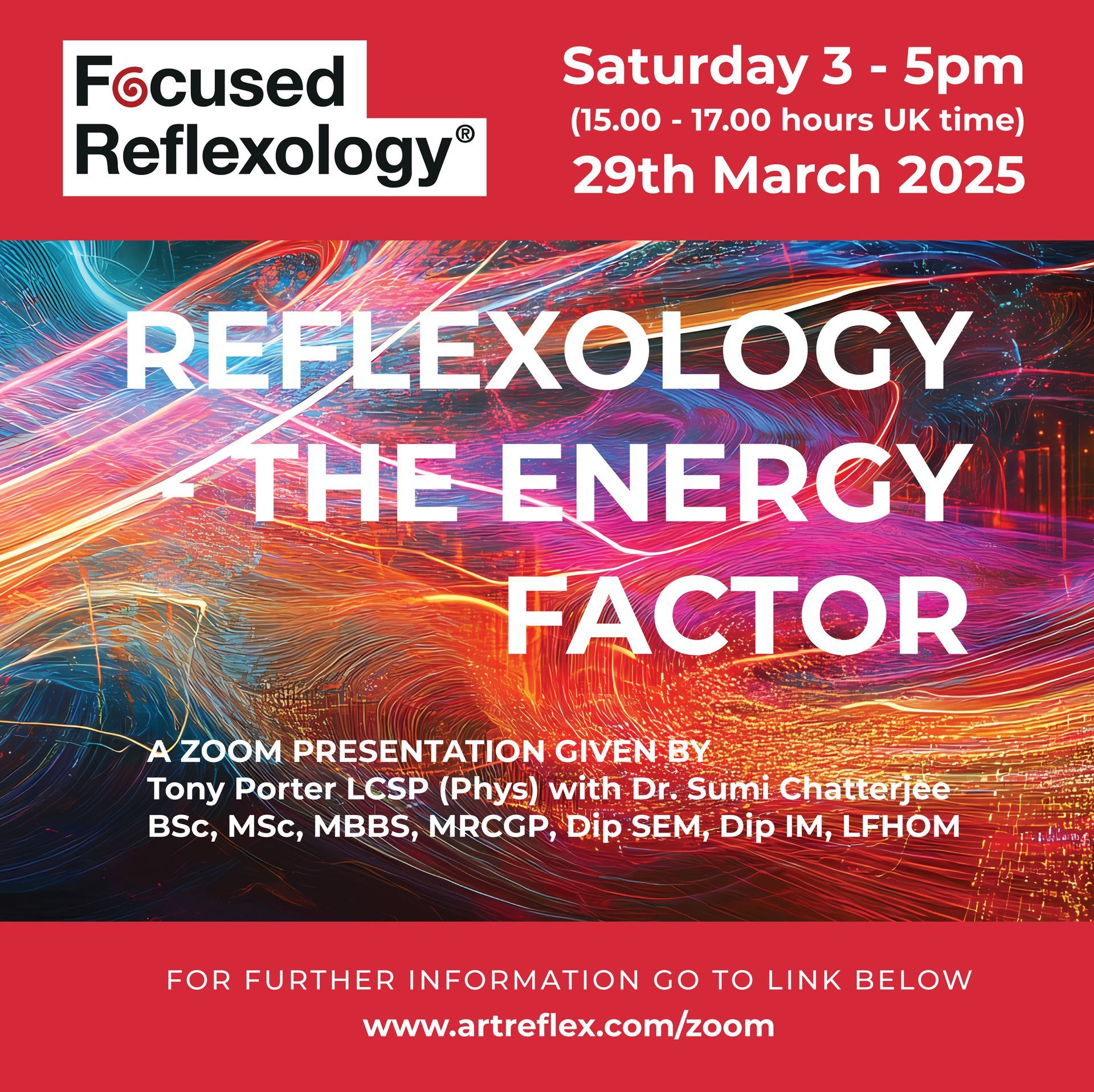Interpreting Reflex Status
The term reflexology is self-descriptive of its purpose — the application of contacts to reflexes in the feet.

The general understanding of reflexology can be rather mundane. By saying this I am not intentionally degrading the therapy. What I am stating here are factors that I have discovered through a lifetime in reflexology.
We gain rudimentary knowledge through initial training, however, the real knowledge comes from being ‘in the field’ of giving treatments. This is where, particularly if a focus is applied to what our fingers and thumbs are detecting, another level of tactile acuity will gradually develop.
The feet have many stories to tell which can only be read (and understood) through the development and awareness of touch. This has shown me the integration of the systems and functions of the body as one unit.
Without being aware of this, a treatment will be segmented, in other words in a push-button A to get result B approach. For example ‘working’ the liver for a liver problem, or the same for the stomach, pituitary, thyroid, ovaries, adrenals, and so forth. These are examples of the segmented approach to reflexology which produces a completely inaccurate assessment of the patient. An awareness of this bio-integrity allows a far deeper understanding of the primary cause of a problem.
The way to develop this understanding is not only through the existence of a painful reflex, but the existence of a change of ‘feel’ or a texture accompanying the sensitive reflex. This is what I call a disturbed reflex.
As this factor is so important I shall make clear what I mean. The existence of a painful reflex is not in itself a negative indication (in fact it can often be a positive one). I repeat it is when it is accompanied by a texture that indicates a disturbed reflex and needs the appropriate type of contact to neutralise (or work out) the disturbance.
Once you become used to reading the feet in this way, an entirely different perspective of reflexology opens up.
An example of this would be the relationship between the liver/gall bladder and the thyroid, or between the thyroid and the ovaries, or painful testes, where a medical examination shows nothing remarkable, the cause could be with the liver. Enlarging on this subject we can include the reason for a hypersensitive pituitary reflex. This is commonly understood to mean that it has a problem and requires reflex attention, which very often is a complete misunderstanding! I could go on and make a list of other correspondences, but I am sure that you have got the gist of what I am imparting.
With this in mind, a different understanding of what the reflexes are telling has to be made. No longer can the view that a painful reflex automatically indicates a problem be entertained. There can be many painful reflexes on the feet, some will display a cornucopia of hypersensitive reflexes. Does this mean that the patient is facing an imminent visit from the grim reaper? Not at all, and yet this view still exists among reflexologists, who base a case history on a completely false premise.
It was Eunice Ingham who originally postulated the existence of ‘crystalline’ deposits on reflex areas of the feet. I have been able to enlarge on her original discovery and have identified a range of other ‘textures’ which I found to be of immense value in understanding the incredible unity of the body.
With this understanding, it means that treatment can be focused more on the reflexes that need focus. We need to realise that the body is an electrical accumulator with a measurable electrical potential. The function of every cell is electrical in nature — a high potential equals high physical energy, while low is the opposite. (this is why there is a variation into the sensitivity and ‘feel’ of the reflexes) To put it simply, when the electrical circulation through the body becomes congested it becomes evident at the various points throughout the surface of the body — in our case, it is the feet. It is this electrical congestion that creates a disturbed feel at the various reflexes.
Becoming aware of this, changed the way I viewed what the feet are telling and the types of contacts I use to work the feet.
I look at reflexology as a portal into the electrical physiology of my patients and through this comes a far deeper and meaningful understanding of the patients condition. This has enormously positive benefits to our patients and therefore the success of our practice.
As this is such an important subject and one which I receive so many inquiries about that I have decided to give an online seminar on zoom.
Details of this can be found on www.focusedreflexology.com
Tony Porter© 2021










